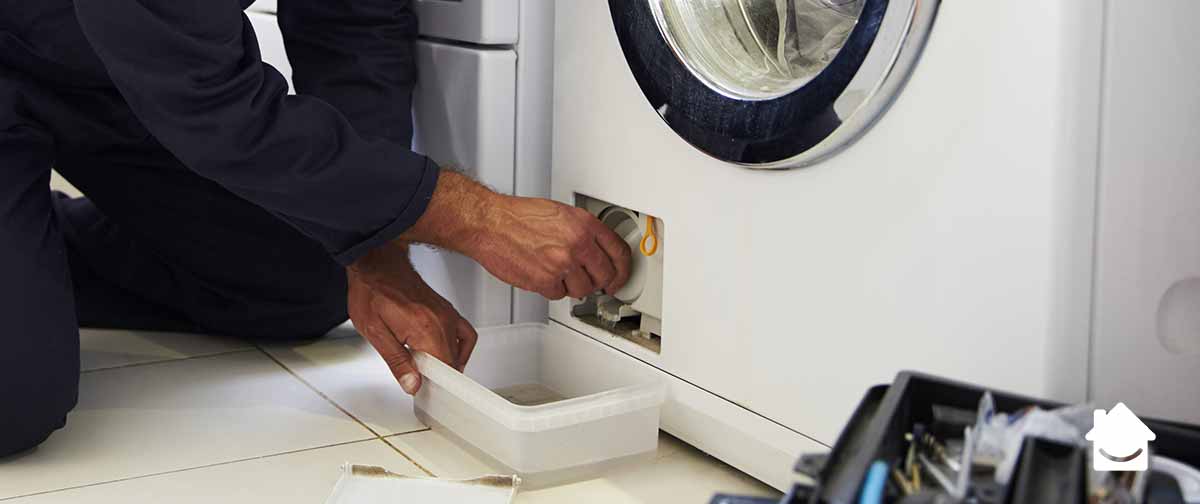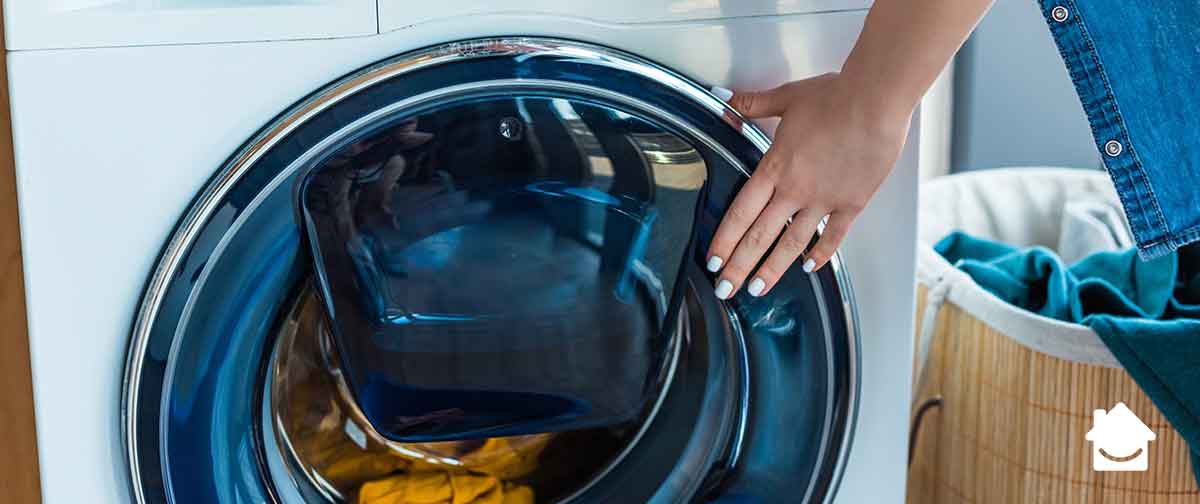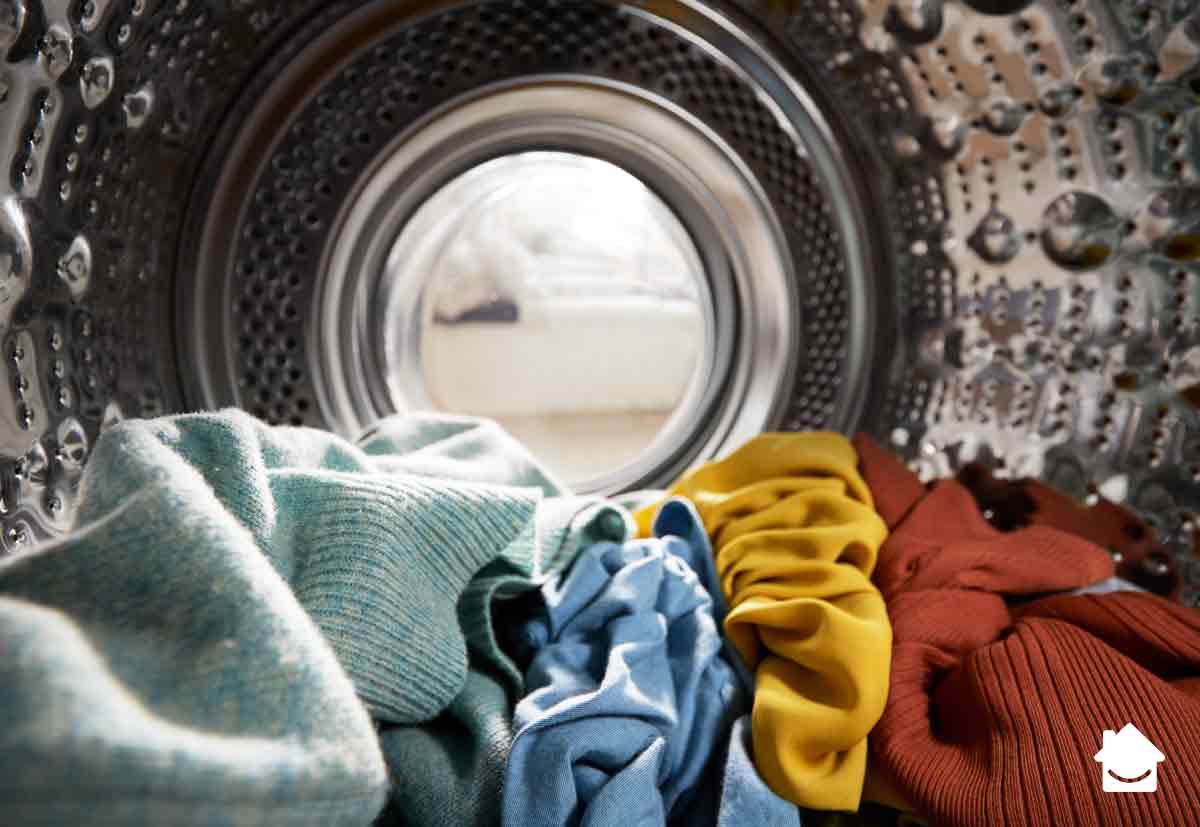If you’ve got washing machine problems, it can seriously slow down your household. But did you know you can fix the more common faults yourself? Keep reading if your washing machine smells, your washing machine is leaking, it refuses to even start, or your clothes just aren’t delivering that fresh summer’s day fragrance the TV ads promise.
Depending on your DIY skill level, you may be able to fix it yourself or call a professional. Remember to always unplug your machine (from your power and water supply) before doing any washing machine troubleshooting.
Washing machine won’t start
First, check the power. It may seem an obvious one, but washing machines can move during the spin cycle and pull the plug out from the wall. Also, check your circuit breaker to make sure nothing has tripped it.
- Is the door lock faulty?
If there’s visible damage and the lock or lock sensor isn’t functioning properly, your machine won’t start. Check if you need to replace or repair your door interlock. - Is it the control board?
If it’s not the door interlock, it could be your control board. If it has malfunctioned, it won’t provide the proper voltage to the lock, the drive motor or fill valve, which will stop it from starting.
Top tip: If you suspect an issue with your control board, always unplug your washing machine and call a professional to test it. Some of the components harness energy and you could risk electric shock, so stay safe and leave it to a professional plumber. - Is it overheating?
If it’s been a heavy wash day, your machine may have overheated. Wait for it to cool down before restarting. However, if this has been happening a lot, you may need to replace the thermostat. You can do this yourself or if you’d rather leave it to the professionals, contact us to book a repair.
Washing machine leaking

Look for the following signs:
- Water pooling at the front or back of the machine
Check your hoses and taps (also known as isolator valves) at the back for wear and tear. You may need to replace these if they are in any way damaged. Try to release the washing machine tap and then tighten it again (keep a bucket handy) to fix a leaking washing machine tap. They are relatively cheap and easy to replace if they don’t stop leaking just by tightening a little. - Rust or mineral deposit inside the machine
Check your drain hose for any clogging or damage. If it’s just an unclogging job you should be able to do this, otherwise, replace it. - A leak in front of the cabinet
Check your water pump – it has several seals that can tear or break. It’s usually behind a small hatch at the front of your washing machine cabinet in the lower corner. Make sure you protect your flooring with towels or a shallow tray to catch any water that may pour out when you unscrew the pump filter cover. Check for damage and look for a possible leak where the pump’s drive shaft enters the pump casing. The pump may need replacing if there are any tears or breaks, so speak to a professional if this is the case. - Foam leaking
Make sure you are removing and cleaning your detergent dispenser regularly. Another good question to ask is: are you using too much detergent? Keep an eye on how much you or anyone else in your household is using. - Door leak
Check if the door seal is dirty or if parts of it are missing or torn. Make sure to clean the seal regularly as you can get a build-up of leak-causing gunk here. If any parts of the seal are missing or torn, this is the no.1 cause of your leak. If it is a small tear you can potentially fix it with some polyurethane sealant. You may want to buy a new door seal, however, as most are under £20 (ensure you get the correct one for your model) and you can fit it yourself.
Finally, if it’s not either of these issues, it could be that your machine is not sitting level on the ground, causing leaks. You can adjust the machine feet so it’s completely level with a screwdriver and a spirit level. - Water pooling directly underneath
This could be one of a number of internal problems so it’s not easy to self-diagnose. In this case, get help from a professional.
If you suspect any other leaks have sprung in your home, check out ‘How to detect a water leak in your home’ for some helpful tips.
Washing machine smells
No one likes dodgy odours in their home. If your washing machine smells, it’s usually caused by mould and bacteria. So make sure you do the following regularly:
- Remove your detergent drawer and thoroughly clean it
- Clean your door seal – gunk builds up here
- Run a 90°C cycle with hot water and vinegar or bleach once a month
- Make sure you’re washing heavily soiled items, like baby bibs/clothes and dishcloths at a high enough temperature
- Wash towels separately
- Never let washed clothes sit in the machine.
Washing machine won’t drain
Is there water still in the drum even though the cycle has finished? If your washing machine won’t drain there’s probably a blockage somewhere within the machine or in the drain hose. First, you’ll need to manually drain it so you can rescue your washing and check what’s happening.
How to drain water out of a washing machine
- Disconnect your power and water supply.
- Check for kinks in the drain hose at the back.
- Get a bucket handy!
- Gently disconnect your drain hose and check for blockages. Keep the hose high in the air until you’re ready to empty it in the bucket.
- Empty the hose. If the water doesn’t flow freely there may be a blockage in the filter.
- Once empty, disconnect the hose from the machine and inspect it fully for any clogs of soap or small pieces of clothing.
- If it’s not the hose, it could be your drain pump that’s clogged, or even ready to be replaced. Check it for blockages. Again, keep your bucket or a bunch of towels handy.
- If the pump is not blocked, it may be faulty. Depending on the age of the machine/drain pump, it may be more prudent to invest in a new machine, so make sure you talk this through with a professional.
No water going into the washing machine
If there’s no water going in, no washing happens. First, double-check your water supply is working efficiently elsewhere in your house. Then pull out your machine and check for:
- A kinked or damaged supply hose
The easiest problem to have: just ‘un-kink’ or replace it. - Pumping tap problems
If the hot tap is clogged you’ll have to drain the hot water tank by disconnecting the hose and turning the tap on until the tank is drained. - Damaged tap levers
They may look ‘on’ when they’re actually ‘off’. If water isn’t released, try using a pair of pliers.
Noisy washing machine
Warning: Unusual noises can mean permanent damage so STOP using the washing machine immediately and try to uncover the possible cause:
- Heavy/unbalanced loads
Don’t overfill or underfill – e.g. just one heavy towel can absorb all the water and stick to one side of the drum, which can damage it. - Uneven washing machine feet
All four feet should be in firm contact with the floor. Adjust them with a screwdriver and spirit level. - Worn drum bearings
Turn the drum while it’s empty. If you feel a lot of resistance, the bearings need replacing. - A damaged drum
A foreign object can get caught between the inner drum and outer tank and cause untold damage.
If none of these apply, your motor may need replacing, so get help from an appliance pro.
Washing machine drains but won’t spin
If your washing machine drains but won’t spin, first, check for balance: modern machines will spin slowly if the load is unbalanced to prevent damage. So make sure you wash similar weighted clothing or towels altogether.
If your washing machine is not spinning at all, it could be one of the following:
- Blocked drain pump
A build-up of lint, a coin or a hairpin can get stuck in the outlet pipe, filter or pump. Unblock the filter and sump hose via the bottom panel. If it’s a blocked pump contact a professional. - Broken door handle
While you order a replacement, if you have wet washing inside, switch off the machine and wait a while, then open. Put towels down! - Drive belt needs replacing
Manually rotate the empty drum – if there’s zero resistance, your belt needs replacing.
If tackling these issues on your own is too much DIY for your liking, get a professional to sort it.
Washing machine door won’t open

There are a number of possible reasons:
- Drainage issue
There could be a blockage in the drain filter, sump hose or pump (see above). - Faulty or damaged door/interlock
Replace it yourself or call a professional. - Overheating
Wait a while for your machine to cool down, then open. If this happens more than once, your thermostat might need replacing.
How to open your washing machine door:
- Check whether there is water in the machine
- Check for obstructions in the drain filter accessed via the bottom panel.
- Try turning off the power and leaving the machine to cool for 10 minutes
Your machine automatically keeps the door locked if it senses overheating. - Try carefully manipulating the door lock
When to call a professional
If you’ve tried the methods listed and you’re still having trouble with your washing machine, it may be time for a more thorough inspection by a professional. Contact HomeServe and we can arrange for a qualified local Home Expert plumber to fix your washing machine.




